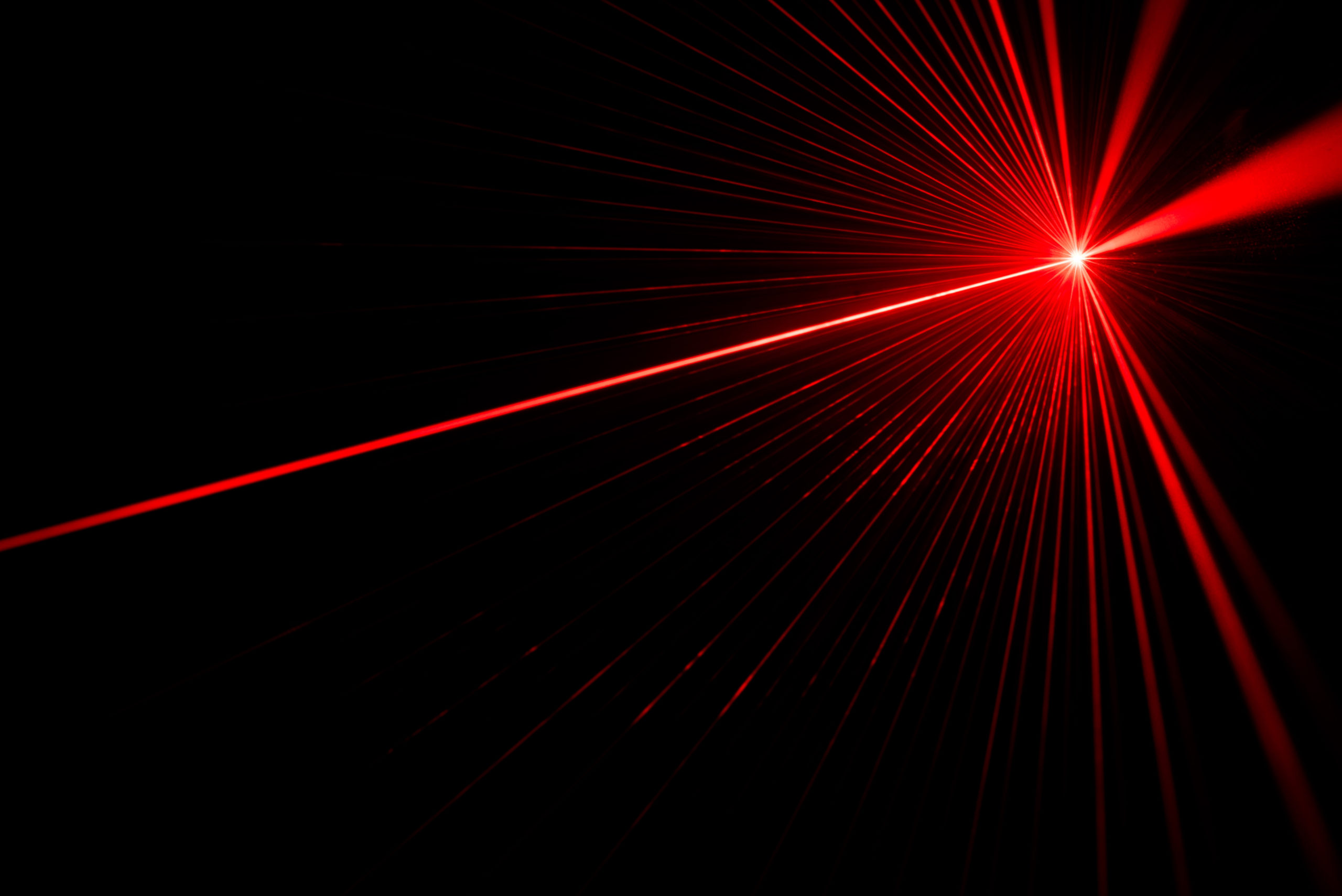
While cleaning out a drawer at the office recently, I stumbled upon a laser pointer. Nothing too crazy about that, in fact, many of us probably have laser pointers either to give presentations, to use as a pet toy, or to perhaps even use as an emergency signaling device in their wilderness kit. Many people though don’t realize just how dangerous a simple laser pointer can be to your eyes. I spoke with Optometrist and Future In Sight Board Member Dr. Dorothy Hitchmoth, and despite working with the Veterans Administration for 22 years, she said that most of the laser eye injuries she has seen have come from unknowing members of the general public who simply didn’t recognize the dangers of lasers.
Lasers bear a warning label from the manufacturer, but many people never bother to read this. It will tell you the classification of the laser as well as the wavelength of light and the power of the laser. A typical red laser pointer intended to provide entertainment for your pet or to use as a small handheld presentation pointer is a Class IIIA laser with power less than 5mW and with a wavelength of 650nM. Though it only cost a dollar and may seem like a trinket or toy, this small laser is a hazard to eyes at a surprisingly long distance—about 50 feet away by some estimates!
I won’t bore you with the math and physics, but there are calculations that can determine what is called the Nominal Ocular Hazard Distance (or NOHD) for a laser’s particular specifications. Within the NOHD a person can sustain a laser eye injury. Many factors will influence the extent of the damage including the aspect of the laser to the eye (direct being more severe than indirect) and the duration of the incident (momentary or prolonged). According to research, visible light lasers typically affect the retina and can cause a wide range of damage from minor scarring which may only be detected by a trained eye care provider, to holes in the retina and retinal hemorrhages. Even short exposures of approximately .25 sec (the typical blink response time to a bright light or an aversive stimulus) can cause a laser eye injury which can permanently affect a person’s central vision. If that isn’t enough to scare you, below the threshold for permanent damage, a person may still experience afterimages, headache, photophobia, dry eye, or watering eyes. So, with that said, is it safe to look at a laser beyond the NOHD? No! Even beyond the NOHD, lasers can still be dangerous; they can cause temporary flash blindness, glare, or distraction which could put someone in grave danger especially in motor vehicles, aircraft, or in busy or dangerous environments such as street intersections or factories with machinery.
The moral of the story is that there is never a good reason to look directly at a laser beam and to treat every laser as you would any weapon. Here are some tips for being safe with lasers:
- Keep them away from children and where children can’t access them; for storage remove the batteries
- Never shine them at a person, animal, vehicle or aircraft (doing so is a federal offense!)
- Be mindful when using near glass, mirrors, or high gloss objects- look before you shine the laser so that it doesn’t reflect off of an object into your or someone else’s eyes!
- Buy and wear protective eyewear with laser filters for your specific laser wavelength if you have hobbies that might expose you to lasers such as bore sighting weapons or astronomy
Remember- damage to the retina is often permanent, so this is an instance where an ounce of prevention is worth more than a pound of cure!

